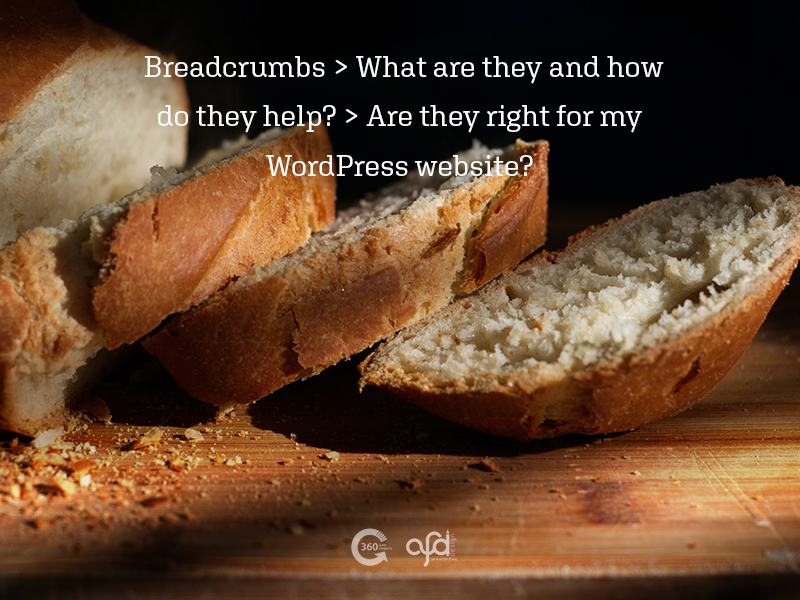Fill out our form, and we'll connect with you within 1 to 2 business days.
Phone: (925) 989-7737

Breadcrumbs in SEO assist search engines across the board. With Google being their biggest fan, they are not to be overlooked. But what are these breadcrumbs and how are they useful for my website and SEO? Do they come in different flavors? Spicy? Garlic?
A breadcrumb trail is typically located at the top of a page and is used to navigate through pages on a website. It gives you the trail of each page you have visited and the ability to jump back and forth from past pages with one click. Similar to a URL, but each step is clickable to take you back to where you once were. Looking something like this: Home>Product>Patio furniture>Chair Cushions
The purpose of breadcrumbs is to make navigation simpler. With one quick click to what you just remember seeing. No fumbling through the pages or constantly back clicking to where you want to be. The best part is knowing how you got to where you are. It’s like your thought process is logged in the breadcrumbs. Wouldn’t that be nice to have for our brain? What did I come in this room for? Go back with one click and Oh ya!
Breadcrumbs give Google a simpler way to figure out how your website is organized. This enables Google to find your site pages more efficiently. In 2018, Google began displaying breadcrumb trails in the SERPS. And since Google is promoting it for SEO, there must be value in it. Let us dig in deeper.
There are three different types of breadcrumbs:
Hierarchy/locations breadcrumbs are the most used breadcrumbs. They tell you where you are on a website from the homepage on. What makes them different is that they log your trail based on the hierarchy of the website. Making it clickable to get back to any page you have previously been on. It’s the typical breadcrumb that is used on most blogs and websites.
Attribute breadcrumbs display the original path taken to get to their current page. They are not subject to the hierarchy of the website. Companies that are database-driven tend to use attribute breadcrumbs. Typically, these are used on an e-commerce site. Product attributes are what make up these breadcrumbs. Like this: Home>Product>Clothing>Gender>Blouses>Size>Color.
History/path-based breadcrumbs is like the browser history. The order of these breadcrumbs is exactly how you have navigated yourself through to get to a certain page. Similar to a browser back button. However, considering how long and crazy your search can be this isn’t the most efficient path. For instance, having a path trail does not help a user who landed on a page in the middle of a site.
Breadcrumbs have been proven to lower the bounce rates on a website. When navigation is simplified a person tends to stay on your site longer. People who get lost on your website are more likely to leave out of frustration.
Breadcrumbs in SEO assist search engines by helping them glide through your pages. This allows the bots to recognize and rate your site as one with a good and simple user experience. As a result, making them a valuable tool for SEO.